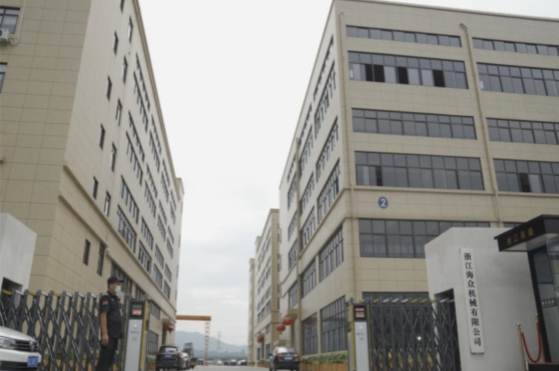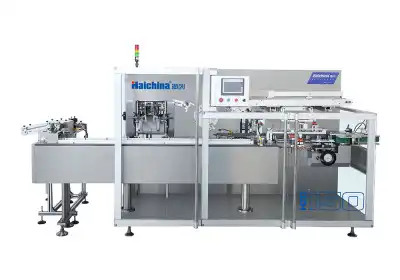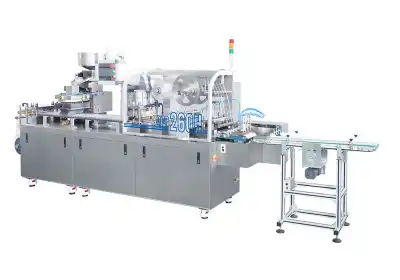Automation and AI Integration in Cellophane Overwrapping
Advanced Robotics in Packaging Operations
The implementation of advanced robotics in cellophane overwrapping systems will significantly boost the efficiency of packaging lines. Robots designed for precision handling will ensure that fragile or irregularly shaped products are wrapped without risk of damage. Their speed and consistency will streamline processes, reduce human error, and speed up production cycles. Additionally, robots will be able to work in tandem with human operators, creating a collaborative environment that maximizes both human ingenuity and machine strength. This blend of robotics and human expertise promises to elevate overall productivity while enhancing safety standards.

Machine Learning for Optimal Performance
Machine learning will revolutionize the adaptability of cellophane overwrapping machines. By continuously analyzing data from production lines, machine learning algorithms can anticipate challenges such as equipment wear, material inconsistencies, or production delays. This predictive ability will enable machines to automatically adjust to changing conditions, ensuring optimal wrapping performance at all times. Furthermore, the technology will help operators make data-driven decisions, reducing human intervention and optimizing resource allocation. This level of intelligent automation will lead to cost savings, greater flexibility, and more efficient management of production lines, particularly during high-demand cycles.

Computer Vision for Quality Control
Computer vision technology will play a pivotal role in transforming the quality control process in cellophane overwrapping. By employing high-definition cameras paired with advanced image processing algorithms, these systems will continuously monitor each package on the production line. They can detect defects such as misaligned seals, tears, or wrinkles in real time, ensuring only flawless products are delivered to consumers. This level of automation will not only improve product quality but also speed up the inspection process. With the ability to scan multiple packages simultaneously, the system can maintain high throughput without sacrificing accuracy, contributing to a reduction in returns and enhancing customer satisfaction.

Sustainability and Eco-Friendly Innovations
Biodegradable Cellophane Alternatives
The push for sustainability will drive the development of biodegradable alternatives to traditional cellophane. These new materials will offer similar protective properties and clarity while being fully compostable. Cellophane overwrapping machines will be adapted to work seamlessly with these eco-friendly films, allowing companies to meet growing consumer demand for sustainable packaging without sacrificing product visibility or protection. This shift towards green materials will help reduce the environmental impact of packaging across various industries.
Energy-Efficient Machine Designs
Future cellophane overwrapping machines will incorporate energy-efficient designs to reduce power consumption and operational costs. Advanced motor technologies, such as servo drives and regenerative systems, will optimize energy use during the wrapping process. Improved insulation and heat recovery systems will minimize energy loss, particularly in heat-sealing operations. These energy-saving features will not only lower the carbon footprint of packaging operations but also provide significant cost savings for manufacturers in the long run.
Waste Reduction Technologies
Innovative waste reduction technologies will be a key feature of 2025's cellophane overwrapping machines. Precision cutting and sealing mechanisms will minimize material waste during the wrapping process. Additionally, advanced film tension control systems will ensure optimal material usage without compromising package integrity. Some machines may even incorporate recycling capabilities, allowing for the immediate reuse of trim waste, further enhancing sustainability in packaging operations.
Industry 4.0 and Smart Connectivity
IoT Integration for Real-Time Monitoring
The Internet of Things (IoT) will play a pivotal role in the evolution of cellophane overwrapping machines. Sensors embedded throughout the machine will collect real-time data on various parameters such as temperature, pressure, and film tension. This information will be transmitted to central control systems, allowing operators to monitor performance and make adjustments remotely. The continuous stream of data will also facilitate predictive maintenance, reducing unexpected downtime and extending the machine's lifespan.
Cloud-Based Analytics for Performance Optimization
Cloud-based analytics platforms will become an integral part of cellophane overwrapping operations. These systems will process vast amounts of data from multiple machines across different locations, providing valuable insights into overall performance trends. Machine learning algorithms will analyze this data to identify opportunities for optimization, such as adjusting settings for different product types or environmental conditions. This level of analysis will enable manufacturers to achieve unprecedented levels of efficiency and consistency in their packaging processes.
Augmented Reality for Maintenance and Training
Augmented Reality (AR) technology will revolutionize maintenance and training procedures for cellophane overwrapping machines. Technicians will use AR glasses to access real-time information overlays, guiding them through complex repair procedures with step-by-step instructions. This technology will also be used for training new operators, allowing them to practice on virtual machines before handling actual equipment. The result will be faster troubleshooting, reduced downtime, and a more skilled workforce capable of maximizing the potential of these advanced packaging machines.
Conclusion
The future of cellophane overwrapping machines is shinning, with 2025 promising a unused period of brilliantly, feasible, and profoundly productive bundling arrangements. As industry pioneers like Zhejiang Haizhong Apparatus Co., Ltd. proceed to enhance, we can anticipate to see machines that not as it were meet the current requests of the showcase but too expect future needs. These headways will enable businesses over different segments to upgrade their bundling forms, diminish costs, and meet advancing customer desires for quality and supportability.
Contact Us
To learn more about cutting-edge cellophane overwrapping machines and how they can benefit your business, contact Zhejiang Haizhong Machinery Co., Ltd. at [email protected]. Our team of experts is ready to help you navigate the future of packaging technology and find the perfect solution for your needs.





